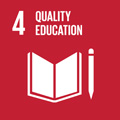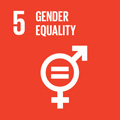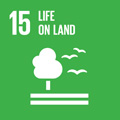- Docente: Francesco Carbognin
- Credits: 12
- SSD: L-FIL-LET/11
- Language: Italian
- Teaching Mode: In-person learning (entirely or partially)
- Campus: Bologna
-
Corso:
Second cycle degree programme (LM) in
Italian Studies and European Literary Cultures (cod. 6689)
Also valid for Second cycle degree programme (LM) in Italian Studies and European Literary Cultures (cod. 6051)
-
from Feb 11, 2026 to May 22, 2026
Learning outcomes
At the end of the course: 1. The student has the theoretical knowledge to put 20th-century poetry in the context of the intellectual movements and history of ideas of European culture and civilization. 2. The student commands a methodology of analysis of 20th-century poetry characterized by rhetorical, stylistic, and linguistic viewpoints through an intertextual, interdisciplinary lens.
Course contents
Main topic:
Forms of enunciation in XXth-Century Italian Poetry
The course (30 hours) aims to:
1) elaborate a notion of "lyric enunciation" based on Benveniste's dinstinction between énoncé ed énonciation;
2) analyze the specific function assumed by the various devices (phonological, lexical, rhythmic-syntactic, rhetorical, metric) of a poetic text with reference to its particular circumstance of enunciation, spatially and historically situated within a "horizon of expectations" (Jauss), knowledge and literary experiences lived as a place of intersections, overlaps and collisions between codes and discourses embodying conflicting ideological orientations;
3) Examine from a diachronic perspective the various configurations assumed by the space of enunciation in XXth-Century Italian Poetry, comparing imitations, transformations and parodic alterations of certain thematic-structural elements of D’Annunzio’s Alcyone and Pascoli’s Myricae carried out by Guido Gozzano, Dino Campana, Giuseppe Ungaretti, Eugenio Montale, Andrea Zanzotto, Amelia Rosselli, Antonio Porta and the Novissimi.
It is strongly recommended to attend the first introductory lesson about the bibliography of the course and the assessment methods (explained in detail at the bottom of the page). Students are also invited to access the Teaching resources on Virtuale platform before the start of the course.
Further information about course, program and assessment methods will be provided in class and during Office hours .
Readings/Bibliography
Literary texts
Below are listed only the books from which the texts will be chosen. The (approximately 50) texts of the poems to be prepared for the exam (pdf) will be available on the platform Teaching resources on Virtuale since the beginning of the lectures.
- Giovanni Pascoli, Myricae, a cura di G. Lavezzi, Milano, BUR, 2015.
- Gabriele d’Annunzio, Alcyone, a cura di F. Roncoroni, Milano, Oscar Mondadori, 1995 (o altra edizione annotata).
- Guido Gozzano, La signorina Felicita ovvero La Felicità, in ID., Poesie e prose, a cura di L. Lenzini, Milano, Feltrinelli, 2008.
- Dino Campana, Canti Orfici, a cura di F. Ceragioli, Milano, Rizzoli, 2014; in alternativa, Canti Orfici e altre poesie, a cura di R. Martinoni, Torino, Einaudi, 2014.
- Giuseppe Ungaretti, Il Porto Sepolto, a cura di C. Ossola, Venezia, Marsilio, 1990; in alternativa: G. Ungaretti, Il Porto Sepolto, in N. Lorenzini-S. Colangelo, Giuseppe Ungaretti, Le Monnier, 2012.
- Eugenio Montale, Ossi di seppia, a cura di P. Cataldi e F. d’Amely, Milano, Mondadori, 2016; ID., Le occasioni, a cura di T. De Rogatis, Milano, Mondadori, 2011; ID., La bufera e altro, a cura di I. Campeggiani e N. Scaffai, Milano, Mondadori, 2019.
- Andrea Zanzotto, Le poesie e prose scelte, a cura di S. Dal Bianco e G.M. Villalta, Milano, Mondadori, 1999; ID., Erratici. Disperse e altre poesie (1937-2011), a cura di F. Carbognin, Milano, Mondadori, 2021.
- Amelia Rosselli, L'opera poetica, a cura di S. Giovannuzzi, con la collaborazione di F. Carbognin, C. Carpita, S. De March, G. Palli Baroni, E. Tandello, Milano, Mondadori, “I Meridiani”, 2012.
- Antonio Porta, Poesie 1956-1988, Milano, Mondadori, 1989, pp. 179-195.
Critical essays
Some of the following essays are available on the Teaching resources on Virtuale platform.
- Pier Vincenzo Mengaldo (a cura di), Poeti italiani del Novecento, Milano, Oscar Grandi Classici Mondadori, 2003 (Introduzione e i cappelli introduttivi ai seguenti poeti: Dino Campana, Corrado Govoni, Aldo Palazzeschi, Guido Gozzano, Giuseppe Ungaretti, Eugenio Montale, Andrea Zanzotto, Amelia Rosselli).
- Guido Guglielmi, Interpretazione di Ungaretti, Bologna, Il Mulino, 1989 (solo il capitolo 1).
- E. Testa, Montale, Torino, Einaudi Tascabili, 2000, pp. 1-77.
- Francesco Carbognin, Linguaggio (1956 – 1969), in N. Lorenzini – S. Colangelo [a cura di], Poesia e Storia, Milano, Bruno Mondadori, 2013, pp. 195-239.
- Francesco Carbognin, Zanzotto, Rosselli, Porta, Milano, Mimesis, 2025 (in corso di stampa).
- Niva Lorenzini, Postfazione, in A. Porta, Poesie 1956-1988, Milano, Mondadori, 1989, pp. 179-195.
- S. Dal Bianco, Il percorso dellla poesia di Andrea Zanzotto, introduzione a A. Zanzotto, Tutte le poesie, Milano, Mondadori, 2011.
- Francesco Carbognin, Variazioni Belliche, in A. Rosselli, L'opera poetica, a cura di S. Giovannuzzi, con la collaborazione di F. Carbognin, C. Carpita, S. De March, G. Palli Baroni, E. Tandello, Milano, Mondadori, “I Meridiani”, 2012, pp. 1292-1310.
Please note
Additional resources (pages from critical essays by Benveniste, Jauss, Benjamin, Barthes, Contini, Eco, Mengaldo, Testa, discussed in class) will be available on the Teaching resources on Virtuale platform at the beginning of the course. These materials, whose knowledge is mandatory, even for non-attending students, are part of the exam program.
Not-attending students
Teaching materials and examination procedures are the same for both attending and non-attending students.
International students
International students will prepare a shorter program, to be agreed with the teacher during the office hours.
Teaching methods
Classes with a strong interaction between students and teacher. Lessons will be held in in-person mode.
Assessment methods
The final oral exam is an interview aimed at verifying in each student some argumentative and technical skills related to the theoretical matters and the poetic texts analyzed throughout the class. Students will be required to read and comment some poems from the course programme, of which they are expected to recognize and to describe the main metrical and rhetorical-syntactic features.
A positive or excellent score (27 to 30/30, even with distinction) corresponds to a full mastering of technical, theoretical, historical tools for the analysis of poetic text, to a strong ability to make connections among any single part of the course contents and to correctly approach textual features with an appropriate language; an average score (23 to 26/30) goes to students who show some lacks in one or more topics or analytical exercises; a low score (18 to 22/30) to students who have severe lacks in one or more topics or exercises, that show improprieties in using notions and approaching textual examples. A negative score is assigned to students who are absolutely not able to manage the general notions and the technical language appropriate to literary analysis, and who cannot recognize the different characteristics (metrical, rhetorical, syntactic, semantic) of a poetic text.
Teaching tools
PC, video projector, overhead projector, slides and digital scans of images and excerpts from poetic and critical texts.
Office hours
See the website of Francesco Carbognin
SDGs



This teaching activity contributes to the achievement of the Sustainable Development Goals of the UN 2030 Agenda.
